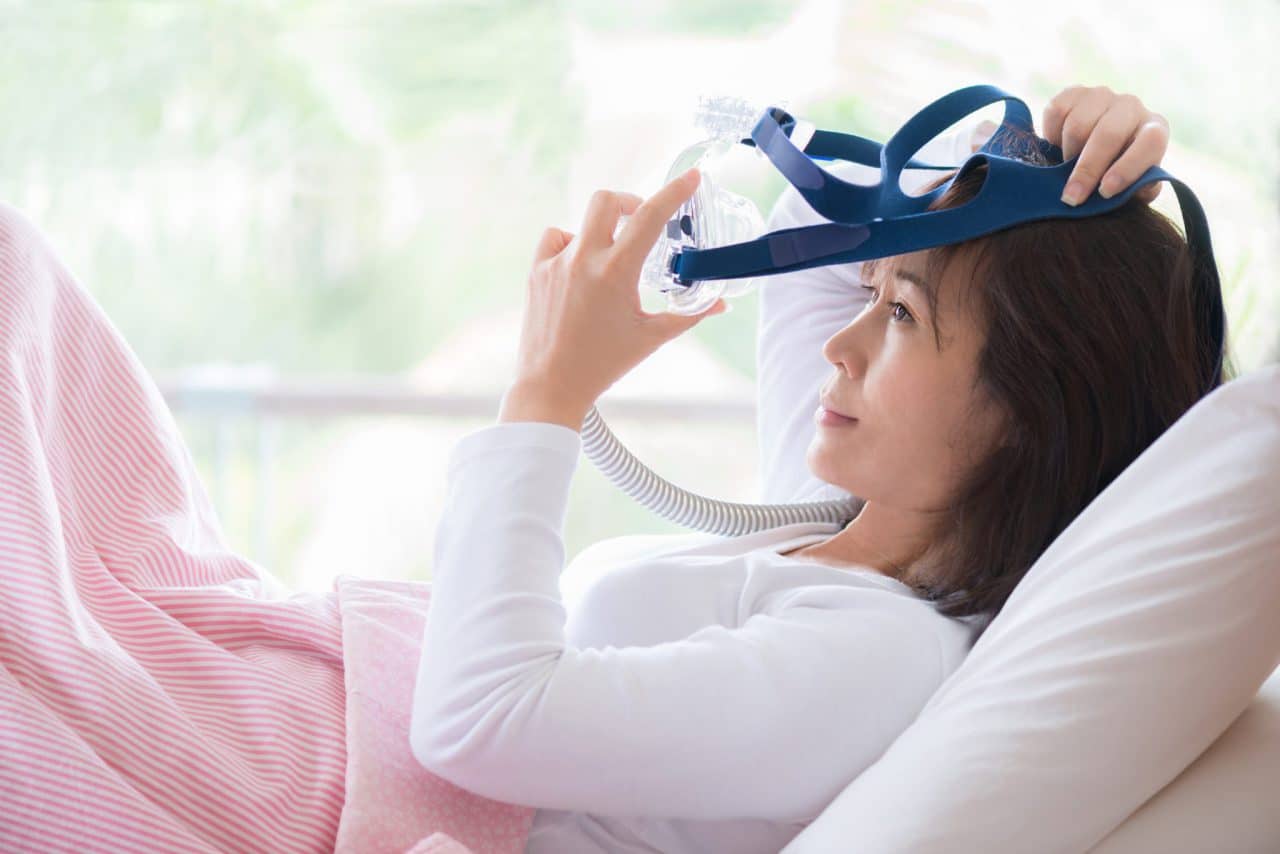Sleep Apnea
Sleep apnea is a disorder in which breathing is interrupted periodically throughout the night. These pauses, or gaps, in breathing may be accompanied by choking or gasping but rarely awaken the sleeping individual. An estimated 18 million Americans suffer from sleep apnea, many of them unaware of their condition.

What Causes Sleep Apnea?
There are two main types of sleep apnea: obstructive and central. Obstructive sleep apnea occurs when the throat muscles relax and droop during sleep, blocking the airway and causing breathing difficulty. It is by far the most common form of the disorder. Central sleep apnea is the result of the brain failing to properly control breathing during sleep; this is rare.
The main sign of sleep apnea is chronic, loud snoring. Symptoms include daytime drowsiness, lack of concentration, memory loss, irritability and depression. You may experience frequent morning headaches and sore throats and wake up with a dry mouth.
Those who are male, overweight and older than the age of 40 are most at risk, though sleep apnea can – and does – affect people of both sexes and all ages. Other factors that can contribute to sleep apnea include natural aging, excessive or bulky throat tissue, large soft palate or uvula, small jaw, large neck and oversized tonsils or adenoids.
Allergies, sinus infections, tobacco use and alcohol all may play a role as well.
How Is Sleep Apnea Treated?
Sleep apnea is more than just a nuisance that robs you of sleep. Left untreated, it can lead to serious health issues such as congestive heart failure, stroke, heart attack, high blood pressure and cardiac arrhythmia. If you suspect you are suffering from sleep apnea, schedule a visit with your physician who will perform a thorough physical examination and may set up a sleep study test.
You may be able to reduce the severity of your symptoms by implementing certain lifestyle changes. Try losing weight, cutting back or eliminating alcohol (especially before bedtime) and quitting smoking. Sleeping on your side instead of your back and elevating your head may also help.
The preferred method of treatment for sleep apnea is continuous positive airway pressure (CPAP). This involves controlled bursts of air pumped into your throat while you sleep, delivered through a mask that is worn over the nose and mouth and attached to a machine. Other options for treatment include oral mouth guards that reposition the lower jaw and tongue, nasal breathing strips and surgery.
While CPAP therapy is the preferred treatment method, not everybody can tolerate this. Individuals looking for an alternative treatment for their sleep apnea might find relief from Inspire therapy.
Snoring
Snoring is extremely common: 45 percent of American adults snore occasionally, and 25 percent are habitual snorers. While many consider it a mere nuisance, snoring is actually a sleep disorder that can be the sign of a serious medical condition.
What Causes Snoring?
When you sleep, your tongue, throat muscles and soft palate relax. If they relax too much, they can droop backward and block the airway, vibrating together when you breathe. This causes the telltale noisy sounds associated with snoring. The more the airway is obstructed, the louder the snoring will be.
There are several factors that increase the odds you will snore. People with bulky throat tissue or an enlarged soft palate are more at risk for snoring, as are those who experience frequent nasal congestion, have a deviated septum, nasal polyps, enlarged tonsils or adenoids as well as those who drink alcohol before bedtime.
The typical snorer is overweight, male and over the age of 40. Snoring tends to worsen with age. In some individuals, the airway becomes so obstructed that breathing is interrupted; this leads to a serious medical condition known as sleep apnea.
Tips for Quieting Your Snoring
If your snoring isn’t a complication of sleep apnea, implementing lifestyle changes may help eliminate the problem. Useful tips include:
- Sleeping on your side instead of your back.
- Losing weight.
- Avoiding alcohol before bedtime.
- Treating allergies.
- Eliminating tobacco smoke.
If lifestyle modifications do not solve the problem, oral appliances that reposition the lower jaw may help. Another alternative is nasal breathing strips. Some individuals might benefit from surgical techniques such as:
- Pillar Procedure. Polyester filament is injected into the soft palate to stiffen it and reduce snoring.
- Uvulopalatopharyngoplasty (UPPP). Excess throat tissue is surgically removed to enlarge the airway. This may include the uvula, soft palate, tonsils, adenoids and/or pharynx.
- Laser Surgery. Lasers are used to remove the uvula and excess tissue from the soft palate.
- Somnoplasty. Also known as radiofrequency tissue ablation, this procedure uses radio signals to shrink the tissue of the soft palate.
- Inspire. An implantable device, similar to a pacemaker, that monitors your breathing patterns while you sleep. It delivers mild stimulation to the nerve that controls movement of the tongue and airway muscles, keeping the airway open and preventing OSA.
Call Willamette ENT & Facial Plastic Surgery at (503) 581-1567 for more information or to schedule an appointment.
“Have always found the staff and doctors here to be helpful. This was my first visit with Dr. Prze after Dr. Allan retired, and he was very friendly, enthusiastic, and thorough. It was obvious he had read my chart carefully before my checkup.”